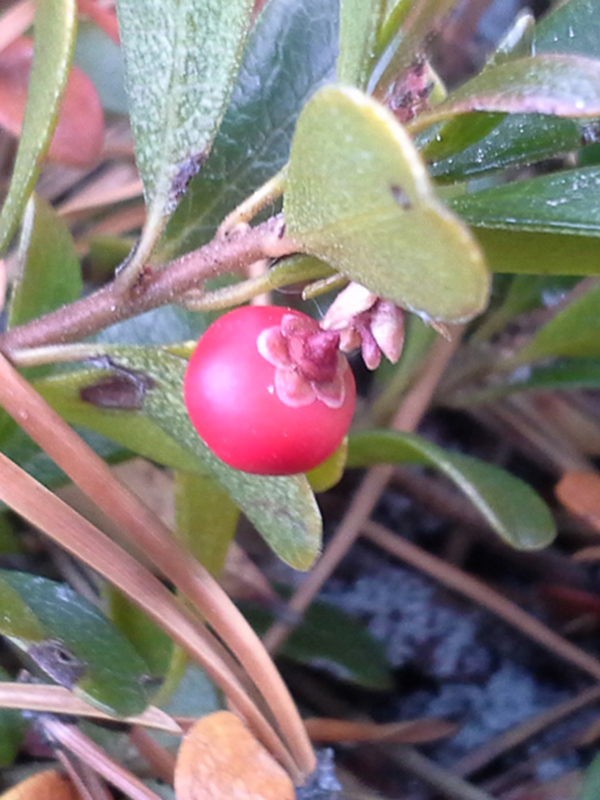
Woody > Arctostaphylos > Arctostaphylos uva-ursi > Arctostaphylos uva-ursi
Arctostaphylos uva-ursi
Common Bearberry, Kinninnick, Mealberry, Hog Cranberry, Sandberry, Mountain Box, Bear's Grape, Creashak
Origin: North America, North Eurasia
| Family |
| Ericaceae |
| Genus |
| Arctostaphylos |
| Species |
| uva-ursi |
| Category |
| Woody |
| Pronunciation |
| USDA Hardiness Zone |
| 4 |
| Canadian Hardiness Zone |
| 2 - 5a |
| RHS Hardiness Zone |
| H7 |
| Temperature (°C) |
| -35 - (-29) |
| Temperature (°F) |
| -30 - (-20) |
| Height |
| 16 - 32 cm |
| Spread |
| 1 m |
Photographs
Description and Growing Information
Flowering Period
| General Description |
| Makes an excellent ground cover and is native to Canada. Does especially well on light soils and should only be used in dry locations. |
| Landscape |
| Large scale ground cover, used to prevent soil erosion on slopes and hillsides. |
| Cultivation |
| Grow in full sun or light shade in well-draining but moist soil that is lime-free. |
| Shape |
| Low, spreading. |
| Growth |
| Slow |
| ID Characteristic |
| A creeping alpine with small white, pink-tinged flowers with red fruit. |
| Pests |
| Black mildew, leaf galls and rust. |
| Habitat |
| Cicumboreal covering Europe, Asia, North America, south to Virginia and Northern California. Covers alpine moors and heaths, on the scree and boulder, often on thin layers of peaty detritus. |
| Bark/Stem Description |
| Reddish-brown branchlets, with papery peeling bark on older twigs. |
| Flower/Leaf Bud Description |
| Solitary, sessile, ovoid with 3 exposed scales. |
| Leaf Description |
| Leaves are alternate, simple, obovate or obovate-oblong and 5mm to 3 cm long. Lustrous dark green above and lighter underneath. |
| Flower Description |
| Small white tinged pink urn-shaped flowers. Borne in nodding racemes; dainty and beautiful. |
| Fruit Description |
| Fleshy drupe with a lustrous bright red colour. |
| Colour Description |
| Leaves are a glossy bright green to dark green in the summer and changing to a bronze - reddish colour in autumn and winter. Foliage effect is unique and quite different from most ground covers. |
| Texture Description |
| Fine. |
| Propagation |
| Seeds have impermeable seed coats and dormant embryos; acid scarification for 3-6 hours followed by 2-3 months of warm and 2-3 months of cold stratification resulted in 30-60% germination according to Michael Dirr. |
| Ethnobotanical Uses (Disclaimer) |
| Tea can be made from the leaves, stems or roots and have some medicinal properties (antiseptic, astringent and diuretic). Fruit is edible for humans, but generally flavourless and mealy. |
